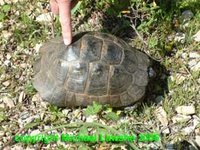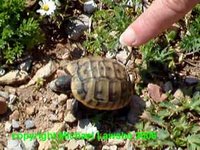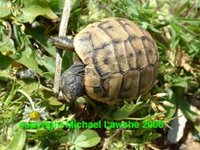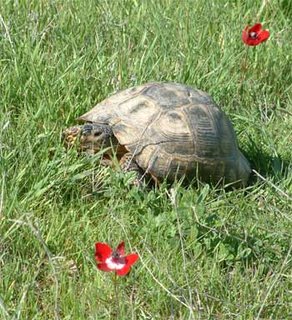This year the weather in southern California has been unusual–the rains were late, the winter warm, the spring frequently cold. The cedar waxwings typically decrease in number as summer approaches, but I’ve been seeing more. Twenty-three of these crested beauties with their black, bandit masks have just landed in the tree across from my office window.
Many spring and summer birds, like orioles and Western kingbirds, arrived early. Yet, numerous winter residents have yet to fly north. As we pass mid-April, a fair number of local species have already raised their first clutch of offspring–Western scrub jay, house finch, black phoebe, and California towhee. The female Allen’s hummingbird in my backyard not only successfully mothered two nestlings through wet cold days, I caught her this morning with a new paramour. Her next pair of eggs will be filling the nest soon.
It shouldn’t have surprised me then that Malibu Lagoon would also reflect this mixing of migrants. Winter visitors still paddled around the estuary snacking on the aquatic plants and crustaceans. There were American wigeons and a group of six brants. All my books agree the brant, Branta bernicla, is a common bird. This small, short-necked goose appears primarily dark in color with a black upper body and a white “necklace” high on its neck. They may be “common” in specific localities, but I’ve never seen one before.
It is always a thrill to see a new bird species, especially when it is one you’ve been looking for. I’ve been keeping an eye out for a brant ever since I saw the movie, “Winged Migration.” The travels of these feathered wonders fascinates me.
On the west coast, this mallard-sized goose spends the winter along the Pacific Continental United States. When spring arrives, it picks up and flies to Alaska’s Aleutian Islands for a quick stopover before heading to the the northern tundra of Alaska and Canada. Every year they make this grand journey, and most of it is flown over open ocean. In the east, brants winter along the mid-Atlantic coast then migrate to Canada’s most northern tundra. In Europe, where they are called Brent geese, they summer along the coast of the North Sea, in Ireland, Britain, and Denmark, then fly north to the tundra of Greenland or Siberia for the summer.
What an amazing thing to stand on a beach in Southern California and watch a dark-headed goose slurping up a piece of slippery sea greens, knowing that in a month or so that same beak may be nipping at new green growth along the shore of the Beaufort Sea. When the senior U.S. Senator from Alaska, Ted Stevens (R), claims there is nothing but barren “frozen wasteland” along the north shore, he wants you to forget that summer comes even to the tundra. He and the oil companies hope all of us will forget about the thousands of birds that rely on the delicate tundra for their breeding grounds.
I’ve walked on the Alaskan summer tundra and plucked dime-sized blueberries from five-inch tall bushes. You may never visit the far Arctic tundra, but the brant flies there every year.
The female makes her shallow-bowl nest on a small rise in the soggy tundra. Sitting snugly on the nest, the female lays with her head down on the turf. Stretched out flat in this way, the brant is completely vulnerable but she also blends in with the flat tundra. Having no profile makes it harder for predators to spot the nesting goose. Perhaps Senator Stevens just hasn’t looked close enough.
I saw my first brant, today. Soon these six birds will be making their way to the far northern tundra. Wouldn’t it be a shame, if you didn’t have a chance to see one too?
Monday, April 24, 2006
Friday, April 14, 2006
Tortoises of Turkey - Spur-thighed tortoise, (Testudo graeca ibera)
Traveling in Turkey I expected to see migrating wood storks, various gulls, and hooded crows, I didn’t expect tortoises.
In California, our state reptile, the desert tortoise (Gopherus agassizii) is threatened. Its numbers in the wild are declining despite conservation efforts. Even field researchers looking for the dinner-plate-sized adults can wander the desert for hours or even days without spotting an individual. The notion that we would casually see wild tortoises, not once, but several times, during our eight days of traveling the Turkish countryside, never occurred to me.
The first sign that tortoises were about was auditory. One of our fellow travelers heard a thumping knock-knock sound and went to investigate. What he found were two tortoises trying to have a romantic interlude. When a shell covers the majority of your body, physical contact of a serious nature is seldom quiet.

 As we roamed the Aegean region investigating countless Greek, Roman, and Byzantine ruins, we continued to encounter tortoises. The sunny spring days were filled with lush green hillsides and vibrant wildflowers. The undisturbed landscape around the various ancient ruins provided a sanctuary for tortoises. Even though the Turkish people consider it a sign of prosperity to have a tortoise on their property, it is difficult for the herbivorous tortoises to compete with domestic sheep and goats. Abundant domestic chickens can also pose a threat to tortoise eggs and hatchlings.
As we roamed the Aegean region investigating countless Greek, Roman, and Byzantine ruins, we continued to encounter tortoises. The sunny spring days were filled with lush green hillsides and vibrant wildflowers. The undisturbed landscape around the various ancient ruins provided a sanctuary for tortoises. Even though the Turkish people consider it a sign of prosperity to have a tortoise on their property, it is difficult for the herbivorous tortoises to compete with domestic sheep and goats. Abundant domestic chickens can also pose a threat to tortoise eggs and hatchlings.
The spur-thighed tortoise (Testudo graeca ibera) is small to medium in size–about the size and shape of a pineapple. The shell is slightly elongated with slight flares around the rear legs. We saw individuals light yellow-green in color to a dark gray-black. This species is quite common in western Turkey and appears in various subspecies throughout the Aegean and Mediterranean. The species in general (Testudo graeca) is also referred to as the Greek tortoise.
One thing was true of all of the spur-thighed tortoises we encountered. They were enjoying spring, either procreating or sampling the lush grasses, clovers, and wildflowers, especially buttercups. In either case, they paid us little mind as we observed and then walked on.
During the 20th century, the spur-thighed tortoise was one of the most popular tortoises in the European pet trade. Countless individuals were collected from the wild and some regional populations were completely depleted. Fortunately this practice was made illegal toward the end of the last century. Combined with the Turkish culture which considers it bad luck to kill a tortoise, legal regulation has helped some populations recover .
.
 In a few areas the tortoises appear to be doing exceedingly well. While exploring an Aegean island and attempting to find a trail to a hillside ruin, we discovered six individual tortoises. They ranged from a breeding pair, to a female digging a hillside nest, to a tiny youngster foraging near the pebbly beach. This little guy was probably last year’s hatchling and experiencing his first spring. He was barely 4 cm (1.5 inches) across.
In a few areas the tortoises appear to be doing exceedingly well. While exploring an Aegean island and attempting to find a trail to a hillside ruin, we discovered six individual tortoises. They ranged from a breeding pair, to a female digging a hillside nest, to a tiny youngster foraging near the pebbly beach. This little guy was probably last year’s hatchling and experiencing his first spring. He was barely 4 cm (1.5 inches) across.
Traversing said hillside for less than two hours, going up and down, trying to find a pathway to the ruin, we actually covered only a small area of the shrubby slope. The fact that we saw six tortoises of varying ages was good evidence of a robust island population.

There is something timeless about tortoises. They have an air of ancient wisdom. Their ancestors waded through primordial swamps before the dinosaurs. The fact that they wander now through the ruins of long-gone human civilizations seems appropriate. In many places around the world tortoises are not protected, not honored, and instead are snatched from their homes to appease a misguided human desire to own them. How wonderful it was to see tortoises basking in the sun, trundling through a carpet of wild poppies, and enjoying a wild life in Turkey.
In California, our state reptile, the desert tortoise (Gopherus agassizii) is threatened. Its numbers in the wild are declining despite conservation efforts. Even field researchers looking for the dinner-plate-sized adults can wander the desert for hours or even days without spotting an individual. The notion that we would casually see wild tortoises, not once, but several times, during our eight days of traveling the Turkish countryside, never occurred to me.
The first sign that tortoises were about was auditory. One of our fellow travelers heard a thumping knock-knock sound and went to investigate. What he found were two tortoises trying to have a romantic interlude. When a shell covers the majority of your body, physical contact of a serious nature is seldom quiet.

 As we roamed the Aegean region investigating countless Greek, Roman, and Byzantine ruins, we continued to encounter tortoises. The sunny spring days were filled with lush green hillsides and vibrant wildflowers. The undisturbed landscape around the various ancient ruins provided a sanctuary for tortoises. Even though the Turkish people consider it a sign of prosperity to have a tortoise on their property, it is difficult for the herbivorous tortoises to compete with domestic sheep and goats. Abundant domestic chickens can also pose a threat to tortoise eggs and hatchlings.
As we roamed the Aegean region investigating countless Greek, Roman, and Byzantine ruins, we continued to encounter tortoises. The sunny spring days were filled with lush green hillsides and vibrant wildflowers. The undisturbed landscape around the various ancient ruins provided a sanctuary for tortoises. Even though the Turkish people consider it a sign of prosperity to have a tortoise on their property, it is difficult for the herbivorous tortoises to compete with domestic sheep and goats. Abundant domestic chickens can also pose a threat to tortoise eggs and hatchlings.The spur-thighed tortoise (Testudo graeca ibera) is small to medium in size–about the size and shape of a pineapple. The shell is slightly elongated with slight flares around the rear legs. We saw individuals light yellow-green in color to a dark gray-black. This species is quite common in western Turkey and appears in various subspecies throughout the Aegean and Mediterranean. The species in general (Testudo graeca) is also referred to as the Greek tortoise.
One thing was true of all of the spur-thighed tortoises we encountered. They were enjoying spring, either procreating or sampling the lush grasses, clovers, and wildflowers, especially buttercups. In either case, they paid us little mind as we observed and then walked on.
During the 20th century, the spur-thighed tortoise was one of the most popular tortoises in the European pet trade. Countless individuals were collected from the wild and some regional populations were completely depleted. Fortunately this practice was made illegal toward the end of the last century. Combined with the Turkish culture which considers it bad luck to kill a tortoise, legal regulation has helped some populations recover
 .
. In a few areas the tortoises appear to be doing exceedingly well. While exploring an Aegean island and attempting to find a trail to a hillside ruin, we discovered six individual tortoises. They ranged from a breeding pair, to a female digging a hillside nest, to a tiny youngster foraging near the pebbly beach. This little guy was probably last year’s hatchling and experiencing his first spring. He was barely 4 cm (1.5 inches) across.
In a few areas the tortoises appear to be doing exceedingly well. While exploring an Aegean island and attempting to find a trail to a hillside ruin, we discovered six individual tortoises. They ranged from a breeding pair, to a female digging a hillside nest, to a tiny youngster foraging near the pebbly beach. This little guy was probably last year’s hatchling and experiencing his first spring. He was barely 4 cm (1.5 inches) across.Traversing said hillside for less than two hours, going up and down, trying to find a pathway to the ruin, we actually covered only a small area of the shrubby slope. The fact that we saw six tortoises of varying ages was good evidence of a robust island population.

There is something timeless about tortoises. They have an air of ancient wisdom. Their ancestors waded through primordial swamps before the dinosaurs. The fact that they wander now through the ruins of long-gone human civilizations seems appropriate. In many places around the world tortoises are not protected, not honored, and instead are snatched from their homes to appease a misguided human desire to own them. How wonderful it was to see tortoises basking in the sun, trundling through a carpet of wild poppies, and enjoying a wild life in Turkey.
Monday, April 10, 2006
Reality In Blue - Solar Eclipse Turkey 2006

March 29, 2006, a solar eclipse dazzled over Turkey. A dark orb hung in the sky haloed in glowing white wisps of solar corona. Crowds gazing up from the dark shadow of the moon found the sun blocked from view and cheered at the wondrous sight. For those who took a moment to glance at the surrounding ancient ruins and countryside, there was the realization that a total solar eclipse offers an alternative perception of the world. For as the moon blocks our vision of the sun, it also blocks direct light from our star and thereby introduces us to an image of our world we would not ordinarily see.
As the sun slips behind the moon, the light that bathes the earth is unlike any other. The “normal” color spectrum, by which we expect to see our world, alters. The balance between the long lightwaves of red and the short lightwaves of blue is skewed–blue becomes dominant.
Typically as sunlight grows faint each evening and shadows stretch ever longer, we expect a reddish tint. The long waves of red light travel in a straight direction and paint the rosy hues of sunset and sunrise. They make the world appear warm and romantic. Blue lightwaves, however, have a tendency to scatter because they are short in length. As the sun drops beyond the horizon, we slid momentarily through the cool blue of twilight.
But a solar eclipse brings a retreat of daylight even at midday. There are no long shadows. As more and more of the sun’s direct rays are blocked by the moon, the dispersed short lightwaves of blue swath the world in alien hues. Gradually, fine differences in color become more pronounced. In the Roman theater in Side, near Antalya, Turkey, the subtle grays and browns in the ruin’s marble friezes became more distinct and the relief of the sculpture more defined.
As more sunlight is lost, a unique opportunity arises to experience a new perception of the world. The green tones of plants become more vibrant. Stone and earth, that may have appeared as mere backdrops, become vivid and alive. The deep blue of the sea mutes. Human skin tones gray toward paler. The temperature not only of the light, but also the air, plunges.
It is easy for humans to lose track of what it is important, to place emphasis on a few temporary things while life races past. But during the assent into a total solar eclipse the familiar illusion of reality transforms, flexes, reaches beyond itself to another place. What we see changes. How much we actually perceive depends on the individual, but the opportunity is there to touch another dimension of being–a completely different way of perceiving the world.
What is real? The rich green laurel leaves that I see awash in blue eclipse light or the laurel leaves I saw two hours earlier, dulled by the brilliant midday sun. If I close my eyes and touch the laurel leaf, perhaps my impression would be completely different.
The moments we give ourselves to question reality are few. Perhaps I chase solar eclipses for the opportunity each of these cosmic events offers, however momentary, to experience a unique instant of time, place and perception. The eclipse in Turkey was blue from horizon to horizon because of the high layer of clouds and the subsequent diffusion of blue lightwaves. There were no visible stars. There were small, but brilliant, red solar flares at the positions of 12:00 and 4:30. The atmosphere was buoyant and chaotic because of the energized crowd in the theater at Side. It was different from South Australia 2002, Curaçao 1998, and Hawaii 1991.

Each solar eclipse offers a different view of our tiny planet. An opportunity to feel the rush of a shadow created by a perfectly placed moon. The chance to experience the universe moving forward without regard for humans. Where will you be in 2008? Canada, Greenland, Siberia, Mongolia? Don’t let the opportunity slip by; there is always 2009–India, Bhutan, China?
Subscribe to:
Comments (Atom)